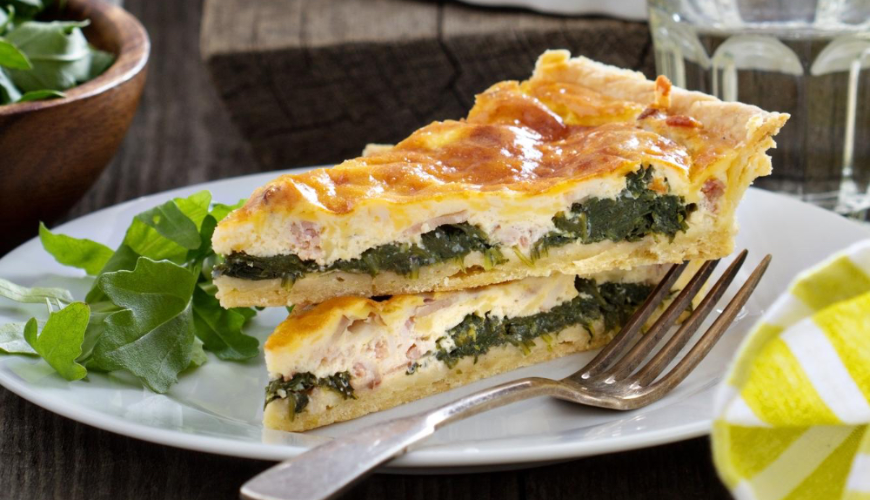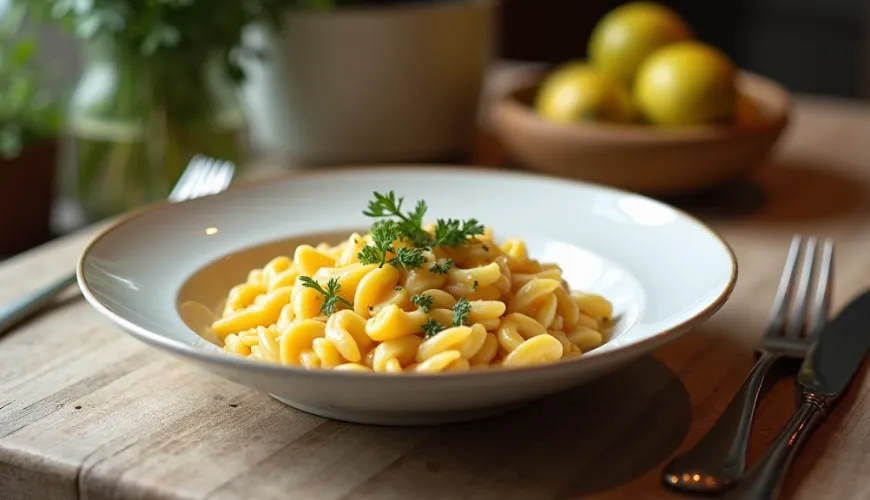
How to Make Cheese Sauce That Will Impress Every Guest

Cheese sauces are among those culinary experiences that one simply cannot help but love. The creamy texture, rich flavor, and subtly salty line of cheese make this sauce an utterly versatile addition to pasta, meat, or vegetables. Whether you're looking for a simple recipe for a quick dinner or want to impress your guests, cheese sauce is a surefire bet.
It's not complicated at all. Perhaps its charm lies in its simplicity. The basic version is prepared in a few minutes and can be mastered even by someone who's just starting out in the kitchen. Yet the result can be the best cheese sauce for pasta you've ever tasted.
What Makes a Cheese Sauce Truly Good?
Let's start with what every sauce should be: smooth, creamy, and well-flavored. A quality cheese sauce has a full flavor that doesn't become bland but also doesn't overpower the other ingredients on the plate. Balance is key – between the saltiness of the cheese, the smoothness of the cream, and possibly spices or herbs.
A common mistake when preparing it is choosing the wrong cheese. Instead of a cheap hard cheese from the store, opt for Parmesan, cheddar, Emmental, or perhaps Gorgonzola. Each of these cheeses will give the sauce a different character. Parmesan brings saltiness and nutty undertones, while Gorgonzola offers a stronger, spicier flavor.
Unlike traditional sauces that require longer cooking, cheese sauce is a quick affair. The base only requires butter, flour, milk, and cheese – essentially a béchamel to which grated cheese is added. But that doesn't mean the result should be a dull routine. Quite the opposite. If you play with it a little, a world of flavors opens up that never gets old.
Cheese Sauce and Pasta
It's no coincidence that one of the most searched recipes on the internet is "cheese sauce for pasta". It's a favorite. Quick, cheap, delicious. And if you pay attention to the choice of pasta – perhaps using tagliatelle, penne, or fusilli – you can easily create a dish that seems like it came from a quality restaurant.
Imagine a typical evening after work. You're rushing home, hunger is rising, but you're not in the mood for lengthy cooking. You reach into the fridge, find a piece of cheddar, cream, and a package of pasta in the cupboard. In twenty minutes, there's cheese sauce with pasta on the table, creamy yellow, fragrant, with a gentle hint of pepper or nutmeg. With each bite comes a sense of calm. It's no wonder some foods are said to be like a warm hug.
And if you want to take the dish to the next level, add pieces of chicken to the sauce. Cheese sauce with chicken is a hit not only with kids but also with adults. The meat adds fullness and texture to the dish that the pasta and sauce alone might lack.
A Recipe That Fits Into Any Ordinary Day
So how do you do it? Here's a simple cheese sauce recipe that you can adjust according to what you have at home.
Ingredients:
- 2 tablespoons butter
- 2 tablespoons all-purpose flour
- 300 ml milk or cream
- 100–150 g grated cheese (Parmesan, cheddar, Emmental)
- A pinch of salt, pepper
- Nutmeg (optional)
Instructions:
- Melt the butter in a saucepan over low heat.
- Add the flour and sauté briefly – a light roux will form.
- Slowly pour in the milk or cream, stirring until the mixture thickens.
- Stir in the grated cheese and let it melt.
- Season with salt, pepper, and optionally nutmeg.
This basic recipe can then be endlessly modified. Add diced chicken, sautéed mushrooms, some spinach, or even crispy tempeh. For those avoiding animal products, there are vegan options available. For instance, using plant-based cheese alternatives and coconut milk can create an equally delicious version.
Cheese Sauces in International Cuisine
It's not just a Czech specialty – cheese sauce in its various forms has a home in many parts of the world. The French have their béchamel with cheese, Italians swear by Alfredo or quattro formaggi, which mixes four types of cheese. Americans love what's known as mac and cheese, a simple yet incredibly satisfying dish that's a symbol of home comfort.
And even though it seems like cheese sauce can't be taken any further, new variations are constantly emerging. After all, as chef Thomas Keller says: "Cooking is a never-ending process of learning." And cheese sauces are a great space for trying out new combinations.
Little Tips That Make a Big Difference
Sometimes just a little tweak can take the result to the next level. For instance, use broth instead of part of the milk – it adds depth to the flavor. Add a teaspoon of Dijon mustard for a sharper edge. Don't be afraid to experiment with herbs: thyme, basil, or sage can pleasantly surprise.
As for storage – cheese sauce can be kept in the fridge for about 2-3 days. However, when reheating, it's best to heat it slowly, ideally in a water bath or over low heat, otherwise the cheese may curdle.
Lastly, it's worth mentioning that cheese sauce doesn't have to be a heavy meal. If you choose a lighter cream, use less cheese, and add a portion of vegetables, you get a balanced dish that delights both taste and body.
Perhaps its charm lies in its adaptability – it can be a simple meal on a student's plate or a sophisticated course at a festive dinner. And in both cases, it offers the same: honest flavor that warms and delights.
Whether you opt for classic cheese sauce on pasta, its variant with chicken, or invent your own twist, one thing is certain – cheese sauce has a firm place in the kitchen. And it seems it will continue to do so for a long time.

